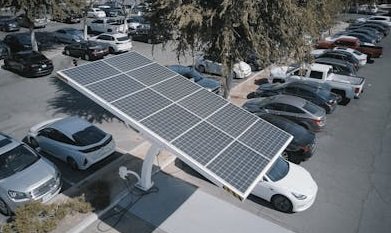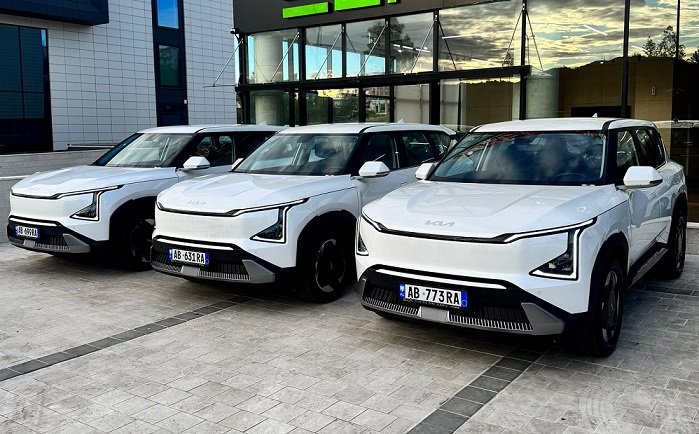Introduction: Driving Towards a Greener Future
The global climate crisis has made reducing our carbon footprint more urgent than ever. With transportation being one of the largest contributors to greenhouse gas emissions, the rise of electric vehicles (EVs) offers a compelling solution. But how exactly do electric vehicles help reduce carbon emissions, and are they truly the eco-friendly alternative to traditional gas-powered cars?
In this comprehensive guide, we’ll break down how EVs reduce carbon footprints, explore the innovations that make them increasingly sustainable, and provide an entertaining look at the environmental impact of these revolutionary vehicles. Whether you’re an eco-conscious consumer, a tech enthusiast, or simply curious about the future of transportation, this article will leave you with a deeper understanding of why electric vehicles are a crucial part of the solution.
1. The Problem with Traditional Gas-Powered Cars: Emissions and Their Impact
Before we dive into the specifics of how electric vehicles (EVs) reduce carbon footprints, it’s important to understand the scope of the problem caused by traditional internal combustion engine (ICE) cars.
The Carbon Footprint of Gas-Powered Vehicles
Gasoline-powered vehicles emit significant amounts of carbon dioxide (CO2), the primary greenhouse gas responsible for global warming. Every time you drive a gasoline car, the engine burns fuel, which releases CO2 into the atmosphere. The average car emits about 4.6 metric tons of CO2 annually. With billions of cars on the road globally, the cumulative impact is staggering.
The production and refining of gasoline also contribute to emissions, creating a vicious cycle where every aspect of the fuel lifecycle—from drilling to refining to combustion—adds to our overall carbon footprint.
Air Quality Concerns
In addition to CO2, gas-powered cars release other harmful pollutants, such as nitrogen oxides (NOx) and particulate matter, which contribute to air pollution, smog, and health problems like asthma and lung disease.
2. The Carbon Footprint of Electric Vehicles: Addressing Misconceptions
While electric vehicles are hailed as eco-friendly alternatives, some skepticism remains regarding their overall impact on the environment. Critics often point to the carbon emissions generated during manufacturing and electricity generation. So, are EVs really greener when you consider their full lifecycle?
Manufacturing Emissions: The Initial Carbon Investment
It’s true that electric vehicle production, particularly the manufacturing of lithium-ion batteries, generates more emissions than producing gas-powered cars. However, this “carbon investment” is typically offset within the first few years of driving, depending on how the electricity powering the vehicle is generated.
The Importance of a Clean Energy Grid
One of the biggest factors determining the carbon footprint of an EV is the source of the electricity used to charge it. In regions where electricity is generated primarily from coal or other fossil fuels, the carbon reduction benefits of EVs are less pronounced. However, as the global energy grid shifts towards renewable energy—such as wind, solar, and hydroelectric power—the carbon savings of EVs will increase dramatically.
In many parts of the world, charging an EV already results in significantly fewer emissions compared to fueling a gas-powered vehicle, even when considering the emissions from electricity generation.
3. The Key Ways Electric Vehicles Reduce Carbon Footprints
Now that we’ve set the stage, let’s dive into the specific ways electric vehicles (EVs) directly contribute to reducing our carbon footprint.
A. Zero Tailpipe Emissions: Cleaner Air for All
The most significant environmental advantage of electric vehicles is that they produce zero tailpipe emissions. Unlike gasoline or diesel cars, EVs don’t burn fossil fuels in an internal combustion engine, meaning they don’t emit carbon dioxide (CO2), nitrogen oxides (NOx), or other harmful pollutants while driving.
Why This Matters:
- Reducing Greenhouse Gas Emissions: As mentioned, CO2 is the primary driver of global warming. Since EVs don’t emit CO2 during operation, they dramatically reduce the emissions that contribute to climate change.
- Cleaner Air in Cities: Air pollution is a severe problem in many urban areas, leading to public health crises. By reducing NOx and particulate matter emissions, EVs improve air quality, making cities healthier places to live.
In cities with high EV adoption, such as Oslo, Norway, or San Francisco, California, studies have shown marked improvements in air quality, benefiting the environment and public health.
B. Energy Efficiency: Doing More with Less
Electric vehicles are more energy-efficient than traditional gas-powered cars. This means they convert more of the energy from their power source (electricity) into actual movement, reducing the total energy required to travel the same distance.
- Electric Motor Efficiency: The electric motor in an EV is incredibly efficient, converting up to 85-90% of energy from the battery into motion. In contrast, a gasoline engine typically only converts about 20-30% of the energy in gasoline into usable power, with the rest lost as heat.
- Regenerative Braking: Many EVs are equipped with regenerative braking systems, which capture energy that would otherwise be lost during braking and feed it back into the battery. This helps extend the vehicle’s range and further improves overall energy efficiency.
With more efficient energy use, EVs require fewer resources to operate, which in turn helps reduce their overall carbon footprint.
4. The Role of Renewable Energy: Supercharging EV Sustainability
As mentioned earlier, the environmental benefits of EVs are closely tied to the energy grid that powers them. One of the most exciting trends in recent years has been the growing use of renewable energy sources to power electric vehicles.
A. Solar-Powered EV Charging Stations
In a bid to reduce the carbon footprint of electric vehicles even further, many companies and governments are investing in solar-powered EV charging stations. These stations harness energy from the sun to provide a truly sustainable way to charge electric cars, eliminating the need for fossil fuel-based electricity altogether.
Some homeowners are also installing solar panels to charge their EVs directly at home, reducing their reliance on the grid and shrinking their carbon footprint even further.
B. Wind and Hydropower: Green Charging Infrastructure
Countries with large-scale renewable energy projects, like Iceland (where the grid is powered almost entirely by geothermal and hydropower) and Denmark (a leader in wind energy), offer a glimpse of the future. In these countries, charging an EV is virtually emission-free because the electricity comes from renewable sources. As more nations transition to green energy, the carbon footprint of EVs will continue to shrink globally.
5. The Long-Term Impact of EV Adoption on Carbon Emissions
Transitioning to electric vehicles on a large scale has the potential to reduce carbon emissions dramatically over the next few decades. Here’s what widespread EV adoption could mean for the environment:
A. Reducing Transportation Emissions Globally
According to studies, transportation accounts for roughly 24% of global CO2 emissions, with road vehicles being the primary culprits. Switching from gas-powered to electric vehicles on a global scale could reduce transportation-related emissions by up to 70% by 2050, assuming continued investment in clean energy.
B. Electric Trucks and Buses: Scaling the Benefits
The benefits of electric vehicles extend beyond personal cars. Electric trucks, buses, and other commercial vehicles are becoming more common. Since these vehicles often cover long distances and burn large amounts of fuel, electrifying them could have an even bigger impact on carbon reduction.
For example, electric delivery trucks used by companies like Amazon and UPS are already reducing emissions in cities, and electric buses are helping cut pollution in public transit systems around the world.
6. Battery Recycling and Second-Life Uses: Reducing Waste
One concern often raised about EVs is what happens to their batteries after they’re no longer useful for driving. Fortunately, significant advancements are being made in battery recycling and second-life uses for EV batteries, ensuring that they don’t contribute to environmental waste.
A. Battery Recycling: Recovering Valuable Materials
Companies like Redwood Materials and Li-Cycle are leading the way in developing processes to recycle lithium-ion batteries, recovering valuable materials like lithium, cobalt, and nickel. These materials can then be reused in new batteries, reducing the need for new mining and lowering the environmental impact of EV production.
B. Second-Life Applications: Beyond the Car
Even after an EV battery no longer holds enough charge for driving, it can still be used in second-life applications. For example, used EV batteries can be repurposed for energy storage in homes or businesses, helping to balance supply and demand on the electricity grid.
Tesla’s Powerwall and Nissan’s xStorage are two examples of second-life applications that make use of old EV batteries to store renewable energy for later use.
7. The Future of Electric Vehicle Technology and Sustainability
As electric vehicle technology continues to evolve, it’s clear that the future is bright for eco-conscious drivers. In the coming years, we can expect to see:
- Longer-Range Batteries: Advances in battery technology, such as solid-state batteries, will make EVs even more efficient and capable of traveling longer distances on a single charge, reducing the need for frequent recharging.
- Smarter Charging Infrastructure: With the rise of vehicle-to-grid (V2G) technology, EVs will be able to store renewable energy and feed it back into the grid, making our energy systems more resilient and sustainable.
- More Affordable EVs: As production scales up and technology improves, the cost of electric vehicles is expected to continue to decline, making them accessible to a wider range of consumers.
Conclusion: Electric Vehicles as a Game-Changer in Carbon Reduction
Electric vehicles are not just a trend; they are a powerful tool in the fight against climate change. From zero tailpipe emissions to their potential for integration with renewable energy, EVs offer a path to significantly reducing our carbon footprint. While challenges remain, particularly around battery production and grid infrastructure, the long-term benefits of widespread EV adoption are undeniable.
As we move toward a future where clean energy and electric mobility go hand in hand, EVs represent a crucial step toward a greener, more sustainable world. So, whether you’re considering buying your first EV or are simply fascinated by the technology, one thing is clear: electric vehicles are driving us toward a cleaner, brighter future.



